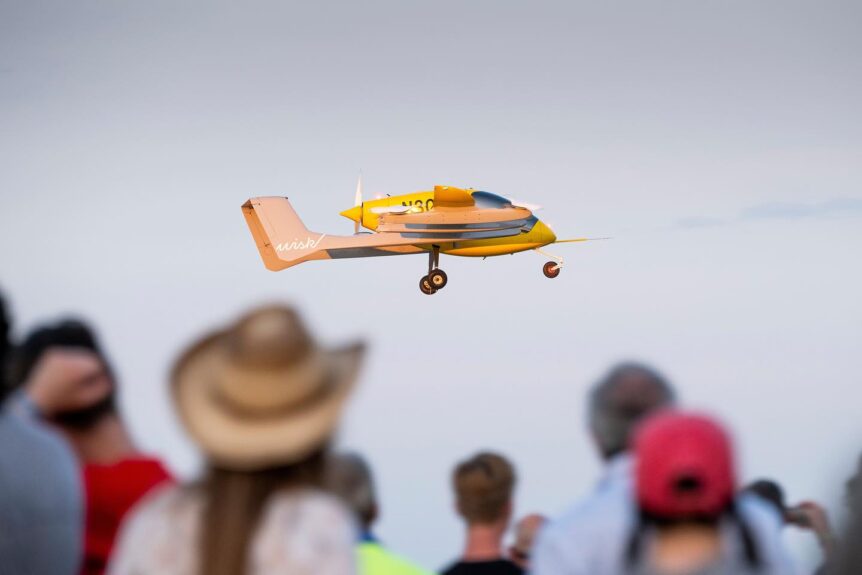A Wisk Cora flew autonomously several times along the length of the 8,002-foot main runway, a first at the Experimental Aircraft Association’s 2023 AirVenture in Oshkosh, Wisconsin. The July 25 event was, “The first-ever public demonstration of a fully autonomous eVTOL fixed-wing airtaxi,” according to the company.
Under development and appearing in different configurations over the last several years Wisk’s aircraft have flown in Hollister, California and in New Zealand. Cora represents the fifth generation of such vehicles. Wisk, a Boeing partner, is not stopping there.
The flight from another perspective, with an explanation of the noise on the soundtrack: “The noise is the 787 APU, not the @WiskAero. ‘ Note how the noise drops as the auxiliary power unit shuts down, with crowd noise competing with the Cora for dominance.
https://twitter.com/i/status/1684023361804943360
A Future with Four Seats
The latest iteration for the firm is their sixth-generation craft, simply called Generation Six. It’s a four-seater, with ample room for passengers and their luggage. After all, how convenient would a quick flight to the airport be if we had to leave our carry-ons at home?
From the video, Wisk appears to have considered the ergonomics involved in entry, seating, and access to music or other “infotainment” while in flight.
Gary Gysin, Wisk CEO, explains the intricacies of achieving eVTOL flight and the many challenges that remain. Becky Tanner, Chief Marketing Officer, tells how parent company Kittyhawk and Boeing provide strategic partnerships for Wisk. Senior Vice President of Engineering and Programs Sebastien Vigneron follows with the idea that commercial airlines already fly with 92-percent of pilot functions handled by a computer. Wisk is simply taking things to the next level.
Chief Technology Officer Jim Tighe gives insight into how simplifying the design adds safety and utility to its operation. “Removing parts, no hydraulics, no oil, no fuel meaning fewer chances of the component failure….” seem like return to the values espoused by Bill Stout, designer of the Ford Trimotor: “Simplicate and add lightness.” Stout had the same problem designers of today’s eVTOLs have – convincing a skeptical public that they would have safe journeys.
It will take all this and more to lure potential eVTOL passengers. In the Aerocar Journal, Dave Clarke writes, “While approximately 20% of respondents said they would never fly in an eVTOL, most people said they’d like a vertiport to be located no more than 20 miles (about 32 kilometers) from their home — but also no closer than 10 miles (about 16 kilometers).” This lack of awareness of the new technology, coupled with the reluctance to have a vertiport too close to home shows the inroads necessary for general acceptance.
Selling the Idea
Product Design and Passenger Interface leader Uri Tzarnotzky highlights the human factors that will help new passengers feel at home in this new environment, while adding explanations of how the craft will be guided to its destination.
Niceties like cup-holders and charging stations for cell phones and other devices provide an inviting atmosphere
Somewhat like eHang in China, Wisk relies on autonomous control in their sky taxi, but retains the ability to override the pre-programmed routing to accommodate changed circumstances.
Demonstrated quiet combined with a soothing cabin environment would certainly seem to allay riders’ fears and lessen the anxiety of a pilot-less ride. Wisk would also seem to merit the good neighbor award for its near-silent comings and goings. If nothing else, curiosity might tempt new riders to the vertiport.

